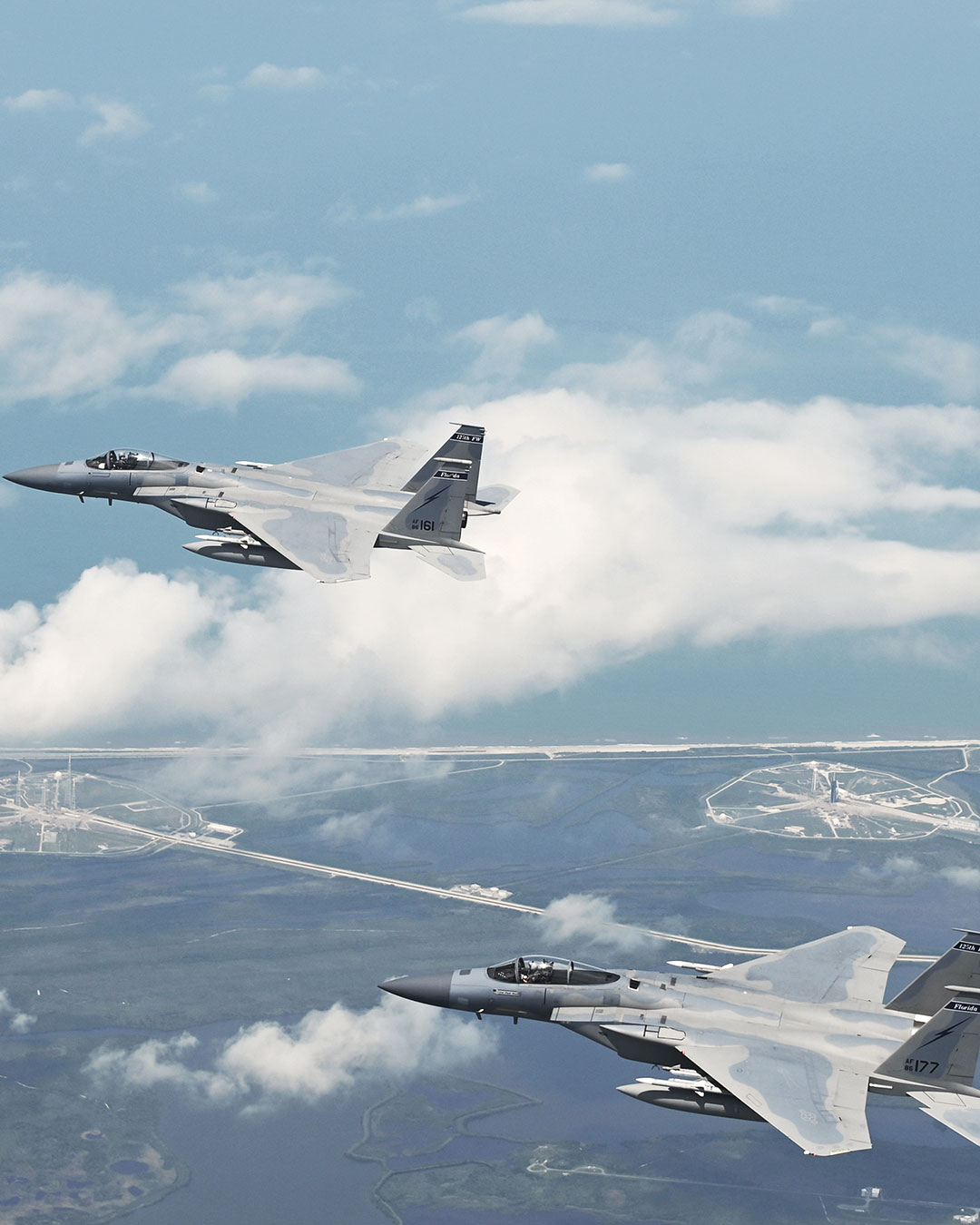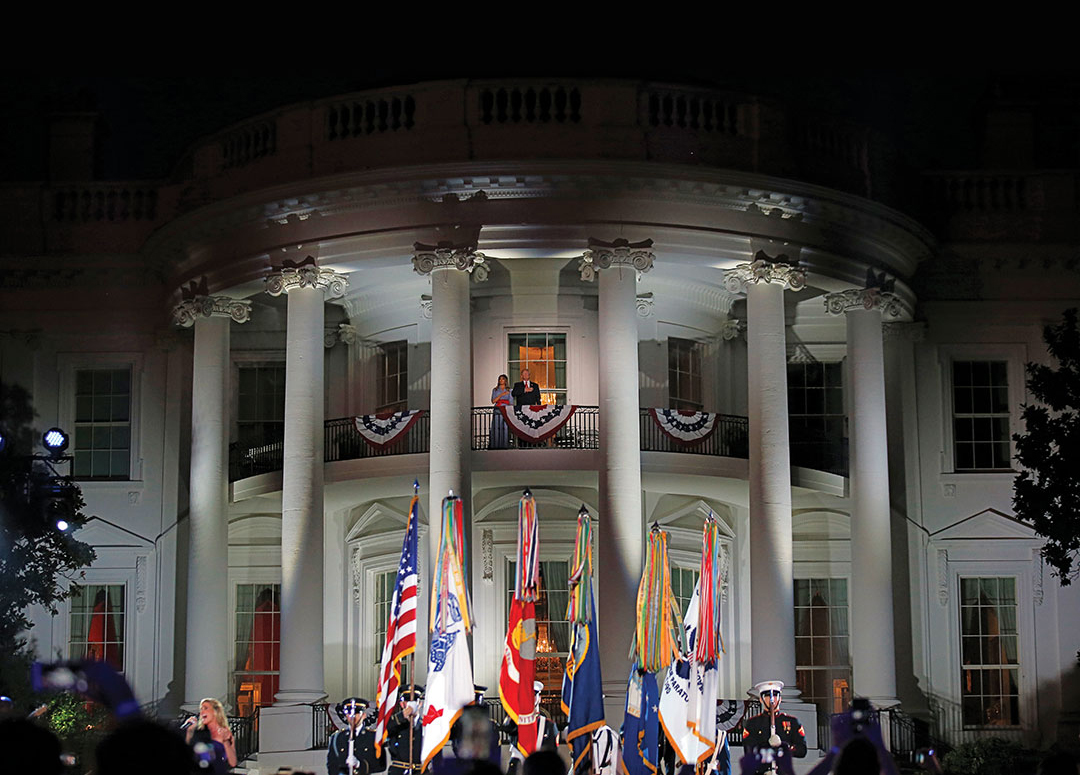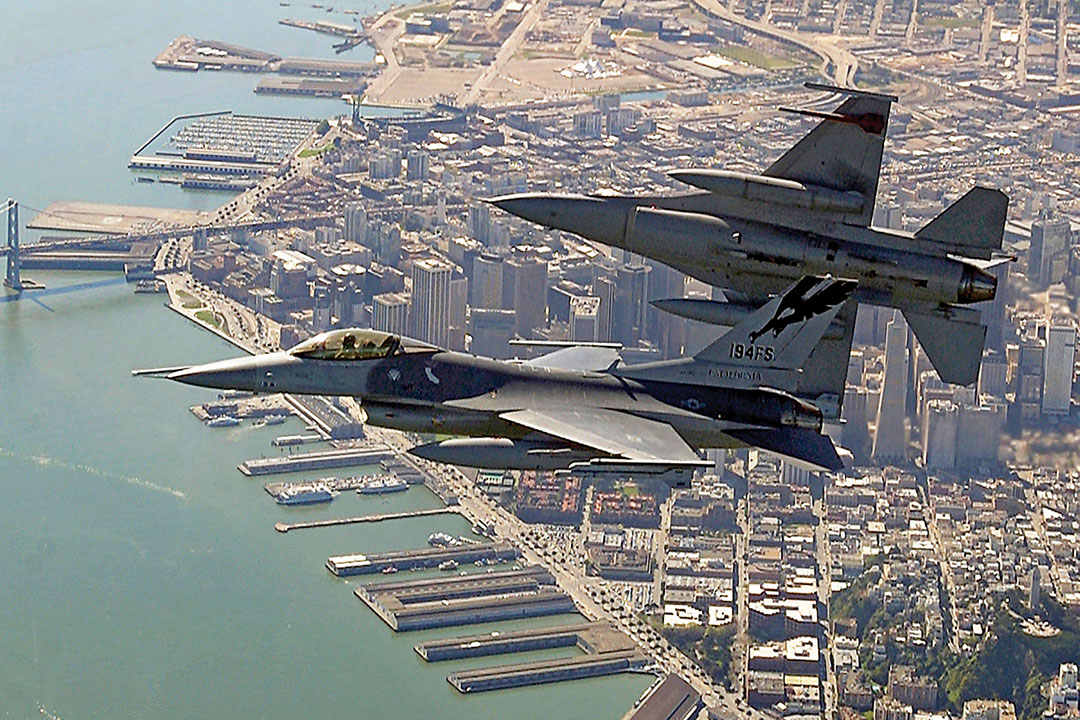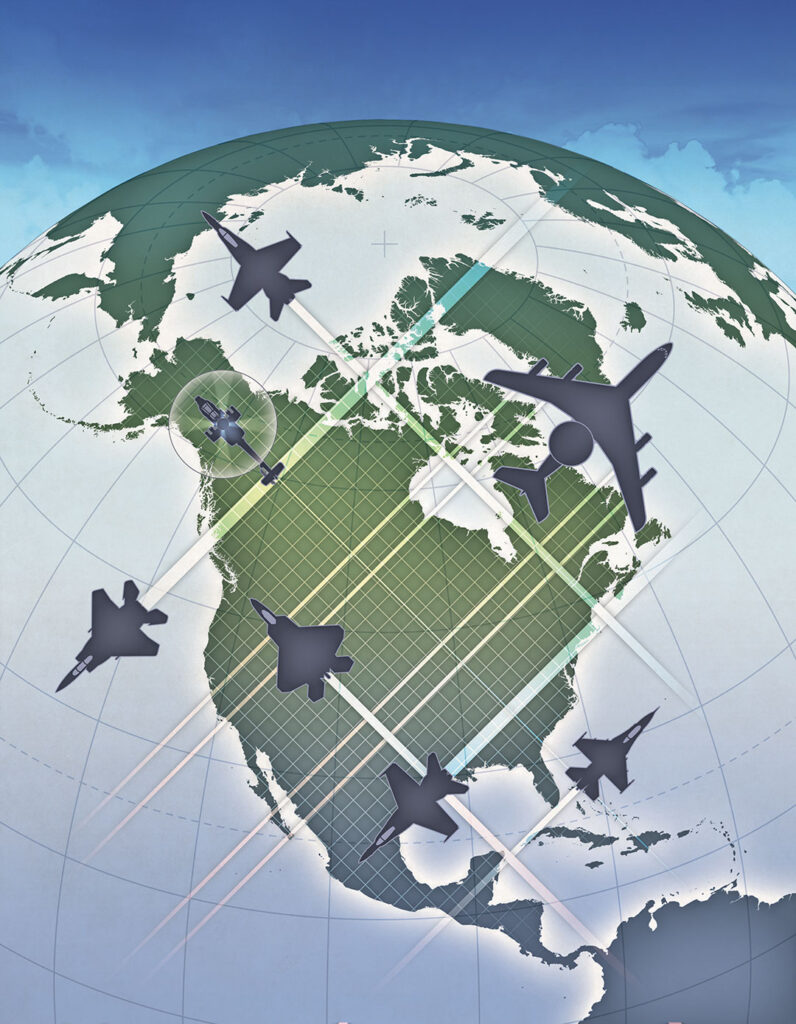NORAD identifies threats, enforces air restrictions
THE WATCH STAFF
They patrol the skies over the biggest events — Super Bowls, World Series games and rocket launches. More frequently, they intercept pilots who violate flight restrictions by flying over protected areas such as the nation’s capital or the presidential retreat.
Aviators from the North American Aerospace Defense Command (NORAD) defend the homeland every day by identifying threats and interacting with civilian and military pilots. The events that often make headlines, however, are NORAD’s military-to-military encounters, such as when NORAD pilots intercept long-range Russian bombers.
NORAD is charged with the critical missions of conducting aerospace warning, aerospace control and maritime warning to defend North America. Since the terrorist attacks of September 11, 2001, NORAD aircraft have conducted more than 2,000 intercepts of nonmilitary aircraft over North America under Operation Noble Eagle, said Steven Armstrong, NORAD’s strategic engagement chief and vice director of operations. “Since 9/11, NORAD, through Operation Noble Eagle, has had a no-fail mission to be able to find, track and identify any suspect aircraft inside North America that could do us harm,” Armstrong told The Watch. “We’ve found over the years the best way to assess potential intent is by putting eyes inside the cockpit of the suspect track. That is why intercepting the aircraft with either fighters or helicopters is essential in assessing hostile intent before a hostile act can be committed.”

Operation Noble Eagle was the name given to the military response to the terrorist attacks, and it now applies to all air sovereignty missions in North America. Aircraft used to carry out the mission include F-15, F-16, F-22 and CF-18 fighters, U.S. Coast Guard MH-65 Dolphin helicopters, airborne warning and control systems (AWACS), and air refuelers.
When a single-engine aircraft entered restricted airspace near President Donald Trump’s Mar-a-Lago retreat on April 20, 2019, and failed to communicate with air traffic controllers, an F-16 fighter and military helicopter intercepted it, according to a statement released by NORAD. Upon intercept, the pilot established communications and left the restricted airspace. When the president visits his Florida retreat, all air operations — with few exceptions — are prohibited within a 16-kilometer circle around Palm Beach International Airport.
While those intercepts gain local notice, NORAD intercepts of Russian aircraft make international news. In March 2020, U.S. and Canadian aircraft intercepted two Russian turboprops that flew over the Beaufort Sea near Alaska. The Russian Tu-142 maritime reconnaissance aircraft were escorted by F-22 and CF-18 planes, NORAD said in a news release. The Russian planes never left international airspace during the duration of the four-hour flight but flew within about 80 kilometers of Alaska’s coast.
“NORAD’s top priority is defending Canada and the United States,” NORAD Commander Gen. Terrence J. O’Shaughnessy said in a statement following a 2019 intercept of Russian aircraft. “Whether responding to violators of restricted airspace domestically or identifying and intercepting foreign military aircraft, NORAD is on alert 24 hours a day, seven days a week, 365 days a year.”
The joint U.S.-Canadian Air Defense Identification Zone (ADIZ) extends 322 kilometers from the coastline in most areas and is primarily over water. It serves as a national defense boundary for aerial incursions. Any pilot who wants to fly in or through the boundary must file a defense visual flight rules plan or an instrument flight rules plan beforehand.
Aircraft approaching and crossing the North American ADIZ must have an operational radar transponder and maintain two-way radio contact. Aircraft flying in the zone without authorization may be treated as an enemy aircraft, which could lead to interception by fighter jets.
It’s not uncommon for Russian military pilots to fly into the North American ADIZ, according to NORAD’s Armstrong. Since Russia resumed long-range aviation activity in 2007, he said, NORAD has averaged about seven intercepts of Russian military aircraft per year. “These numbers have varied each year from as high as 15 to as low as zero,” he said.
NORAD is a binational command of Canada and the U.S., so air intercepts are conducted with resources from both countries. Most intercepts, however, occur over the U.S., Armstrong said.

Radio silence can trigger intercept
NORAD will conduct intercepts over the homeland if an aircraft enters a Special Flight Rules Area around the nation’s capital or another temporary flight restrictions (TFR) area, Armstrong said. TFRs are established on any given day due to the movement of top government officials, special events, natural disasters or other unusual events. They are established by the Federal Aviation Administration (FAA) and enforced by NORAD where appropriate.
If an aircraft enters restricted airspace and is unresponsive to the FAA, NORAD may scramble fighters or rotary wing aircraft to conduct an intercept. NORAD uses several methods to notify pilots to leave an area immediately. “Some of the methods used to communicate with pilots include radio contact, visual hand signals, rocking of wings and release of flares to signal the aircraft they have entered restricted airspace,” Armstrong said.
An intercept typically means that NORAD aircraft flew alongside, identified and then escorted the civilian aircraft out of restricted airspace, Armstrong said. The civilian aircraft is often led to a nearby airport and met by local law enforcement for further investigation.
NORAD has air resources in multiple locations, so it can quickly access all parts of Canada and the U.S. “There’s a great deal of coordination that takes place as NORAD analyzes potential threats and intelligence information, decides where to position alert aircraft and determines readiness levels for an effective air defense posture,” Armstrong said.

Southern Partners
NORAD also keeps watch on the U.S. southern border. The command has a long-running partnership with Mexico’s National Defense Forces (SEDENA) to track suspicious flights that cross the U.S.-Mexico border. Each year, SEDENA, NORAD and U.S. Northern Command (USNORTHCOM) conduct exercise Amalgam Eagle to practice mutual warning and information sharing to produce a cooperative response to illicit flights that cross the border.
Such exercises “serve to expand and enhance our trusted relationships with our partners and friends in all levels of the Mexican government,” said Joseph Bonnet, director of Joint Training and Exercises for NORAD and USNORTHCOM.
Amalgam Eagle includes command post and field training exercises to enhance airspace control procedures with support from civilian agencies from both countries.

The exercise consists of two phases. The first involves practicing procedures for the handover of a derelict aircraft — a term used when an aircraft is not under human control. The second phase focuses on national procedures for monitoring an illegal flight and the cooperative hand-off of the aircraft from one nation to the other.
The objectives are to maintain operational and communications capabilities among NORAD, USNORTHCOM and SEDENA; to build a common operational picture of the continental air domain; and to continue developing and using communications protocols regarding illicit aircraft traveling through U.S.-Mexico airspace.
The exercises over the past several years “have grown in scope and complexity, and have mutually benefited our military forces in building capacity and capabilities,” Bonnet said. “Today, the Mexican and U.S. militaries enjoy outstanding collaborative relationships based on trust and confidence, which are critically important to future cooperation and mutual support in response to a crisis such as an illicit flight that crosses the U.S.-Mexico border.”

